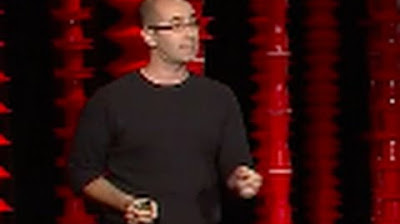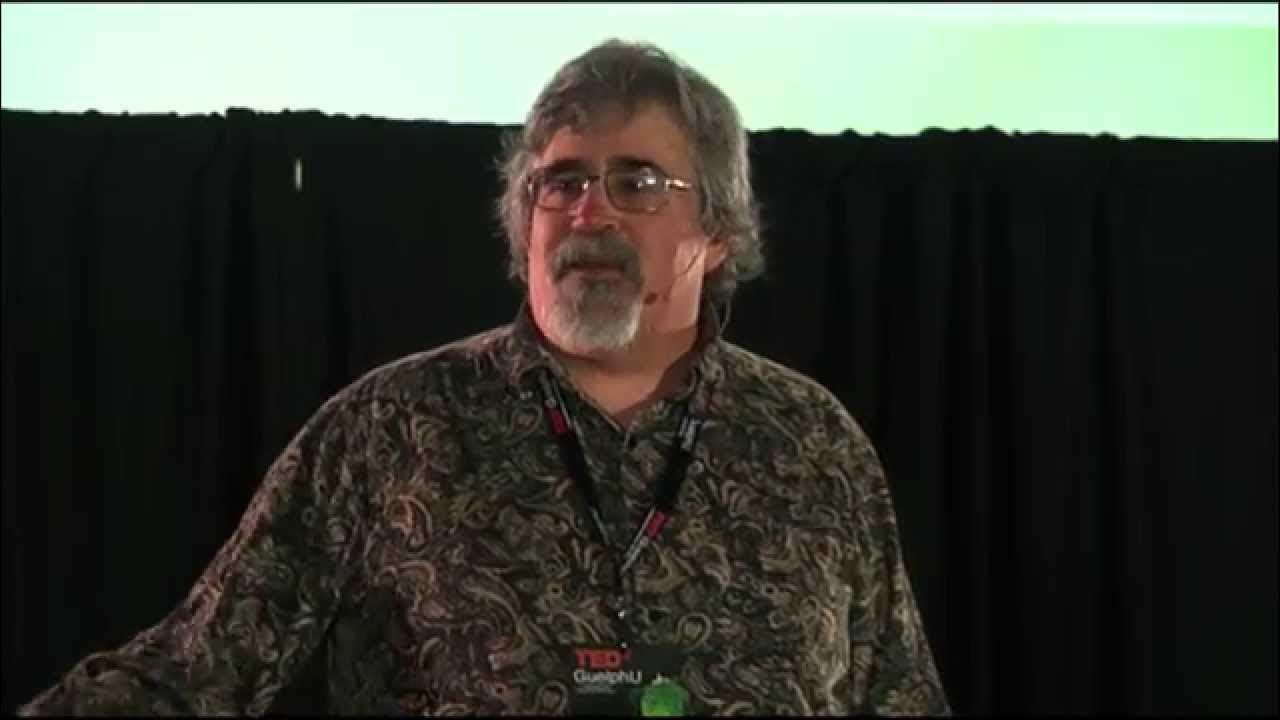Math isn't hard, it's a language | Randy Palisoc | TEDxManhattanBeach
TLDRThe speaker emphasizes the importance of teaching math as a human language to improve proficiency rates among students. With only 26% of U.S. 12th graders proficient in math, the speaker argues that the subject has become dehumanized and abstract, leading to widespread confusion. By treating math as a language that allows communication, just like English or Spanish, students can better understand concepts such as fractions, which are foundational to algebra, trigonometry, and calculus. The speaker shares an anecdote about teaching a 5-year-old to add fractions using everyday analogies, demonstrating that math can be intuitive when approached as a language. The talk concludes with a call to action to educators and the public to transform the way math is taught, advocating for a language-based approach to make math accessible and less intimidating, thereby equipping students with the mathematical thinking necessary for a future that is yet to be defined.
Takeaways
- 📊 Only 26% of U.S. 12th graders are proficient in Math, indicating a need for improvement in the education system.
- 🚀 The perception that only 26% of people are 'hardwired' for Math is incorrect; the issue lies in how Math is taught.
- 🌐 Math is a human language, used historically for trade, building, and agriculture, and should be taught as such to make it relatable.
- 📚 The abstraction of Math has led to its dehumanization, causing confusion among students.
- 🤔 The current teaching methods may not be effectively communicating the real-world applications and relevance of Math.
- 🍎 Using everyday examples and language can make Math more intuitive and understandable, even for complex concepts like fractions.
- 👧 Even young children can grasp basic mathematical concepts when taught through a language-based approach.
- 📐 Fractions are fundamental to higher mathematics, and understanding them early is crucial for later success in subjects like algebra and calculus.
- 🔢 Memorization of basic multiplication facts is essential for fluency and confidence in Math, much like knowing the alphabet is for reading.
- 🌟 Mathematical thinking is not just about solving problems; it's a tool for imagining and creating the future.
- 🏫 There is a call to action for educators and the public to push for a more humanized approach to teaching Math to increase proficiency rates.
Q & A
What is the percentage of U.S. 12th graders who are proficient in Math according to the nation's report card?
-26% of U.S. 12th graders are proficient in Math.
What does the speaker suggest is the reason for the low proficiency in Math among students?
-The speaker suggests that students don't understand Math because it has been taught as a dehumanized subject.
Why does the speaker compare Math to a human language?
-The speaker compares Math to a human language because it allows people to communicate with each other and was used in ancient times for trade, building monuments, and measuring land for farming.
What famous philosopher is referenced in the script to support the idea that Math is a language?
-Galileo is referenced, with the quote, 'The laws of nature are written in the language of mathematics.'
How does the speaker propose to make fractions more understandable to children?
-The speaker proposes using a language approach, starting with simple examples like apples and pencils, to make fractions more relatable and understandable.
What is the significance of understanding fractions for a student's future in mathematics?
-Understanding fractions is significant because they are foundational to algebra, trigonometry, and calculus, and a lack of understanding can make the journey through high school math difficult.
How did the speaker's 5-year-old niece demonstrate an understanding of adding fractions?
-The niece demonstrated understanding by using the analogy of adding apples to understand adding thirds, and she correctly answered that one third plus one third equals two thirds.
What is the speaker's stance on the idea that people are either hardwired for math or not?
-The speaker disagrees with the idea that people are either hardwired for math or not, asserting that math is a human language and everyone has the ability to understand it.
How did the speaker help a high-school student who was struggling with algebra?
-The speaker helped the student by focusing on mastering multiplication facts, which served as a foundation for understanding more complex math concepts and building confidence.
What is the importance of teaching math as a human language?
-Teaching math as a human language makes it more intuitive and accessible, reducing anxiety and disengagement among students, and fostering a better understanding of mathematical concepts.
What challenge does the speaker issue to the audience regarding the proficiency in math?
-The speaker challenges the audience to push the proficiency rate higher than the current 26%, emphasizing the importance of mathematical thinking for building young minds and envisioning the future.
What simple example does the speaker use to illustrate the concept of adding fractions?
-The speaker uses the example of adding apples, stating 'apples + apples' to demonstrate how simple the concept can be when taught as a language.
Outlines
📚 The Humanization of Mathematics
The first paragraph emphasizes the importance of math proficiency among U.S. 12th graders, highlighting the concerning statistic that only 26% are proficient. It challenges the notion that only a fraction of people are naturally inclined towards math and instead argues that the confusion stems from the dehumanized way math is taught. The speaker advocates for a more human approach to math education, likening math to a language that was essential for trade, construction, and agriculture in ancient times. By making math relatable and contextual, students can better understand and engage with the subject, starting with fundamental concepts like fractions.
🌟 Overcoming Math Anxiety Through Language
The second paragraph continues the discussion on math education by sharing a personal anecdote about teaching a 5-year-old to add fractions using a language-based approach. It dispels the myth that only some people are 'hardwired' for math, asserting that math is a human language accessible to everyone. The speaker recounts working with a high-school student who struggled with algebra due to incomplete knowledge of multiplication facts. Through a focused approach on mastering multiplication, the student's confidence and math skills improved dramatically. The paragraph concludes with a call to action to improve math education by treating it as a language, which can lead to higher proficiency rates and better problem-solving skills among students.
Mindmap
Keywords
💡Proficiency
💡Math
💡Dehumanized
💡Language
💡Abstraction
💡Fractions
💡Algebra
💡Multiplication Facts
💡Problem Solving
💡Human Language Approach
Highlights
Only 26% of U.S. 12th graders are proficient in Math, which is a cause for concern.
The speaker argues that the issue is not that only 26% of people are hardwired for Math, but rather the way it's taught.
Math should be taught as a human language, similar to English, Spanish, or Chinese, to make it more relatable and understandable.
Mathematics has been a crucial tool for trade, building monuments, and farming since ancient times.
Galileo's quote is used to emphasize that the laws of nature are written in the language of mathematics.
The current teaching methods have abstracted math beyond recognition, leading to student confusion.
An example of a 3rd grade math standard is given to illustrate the complexity and abstract nature of current math education.
The importance of understanding fractions is emphasized as they are foundational to algebra, trigonometry, and calculus.
A method of teaching fractions using a language approach is introduced, starting with simple examples like apples and pencils.
The speaker's 5-year-old niece was able to understand the concept of adding fractions without formal math education, demonstrating the effectiveness of the language approach.
The language approach to math makes it intuitive and easy to understand, even for young children.
The misconception that people are either hardwired for math or not is debunked; math is a human language and thus accessible to all.
The importance of mastering multiplication facts is highlighted as a foundation for higher math skills.
A high-school student's journey from struggling with algebra to becoming confident in math is shared as a success story of the language approach.
The student's newfound ability to apply math to real-world problems signifies a shift from math causing problems to math solving problems.
The speaker challenges the audience to improve the national proficiency rate in math by teaching it as a human language.
Mathematical thinking is essential for young minds to imagine and build the future.
The simplicity of the language approach to math is emphasized, suggesting that progress can be made by focusing on fundamentals like apples + apples.
Transcripts
Browse More Related Video

Why is algebra so hard? | Emmanuel Schanzer | TEDxBeaconStreet

The joy of abstract mathematical thinking - with Eugenia Cheng

Why teach calculus?: Daniel Ashlock at TEDxGuelphU

Mathematics is the sense you never knew you had | Eddie Woo | TEDxSydney

This U.S. Olympiad Coach Has a Unique Approach to Math

How you can be good at math, and other surprising facts about learning | Jo Boaler | TEDxStanford
5.0 / 5 (0 votes)
Thanks for rating: